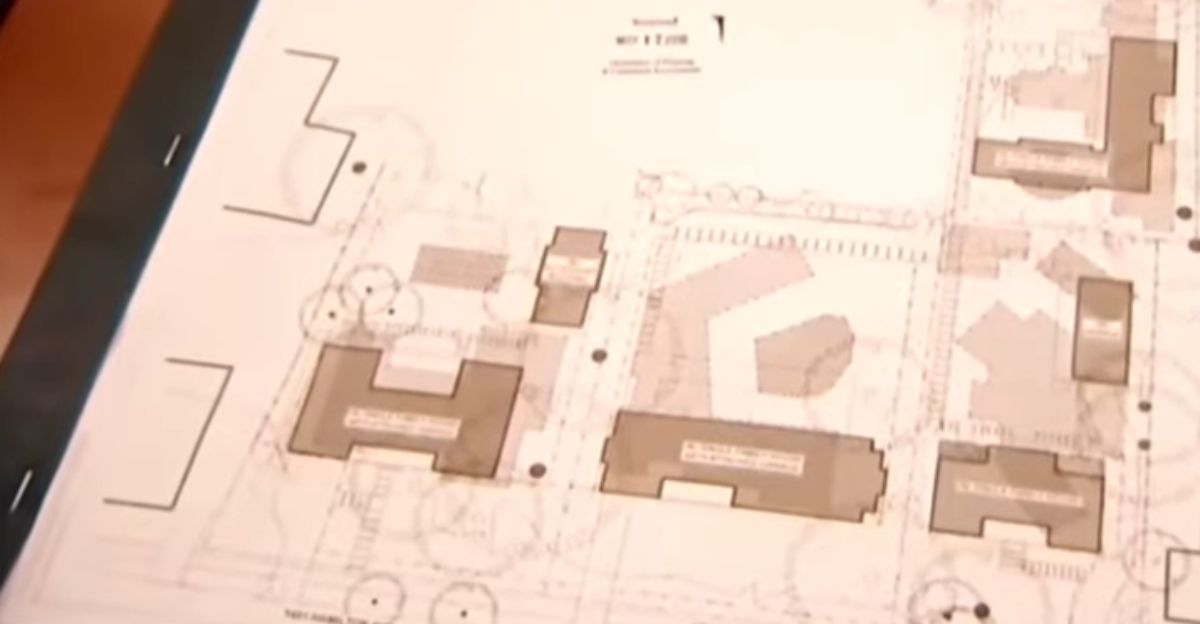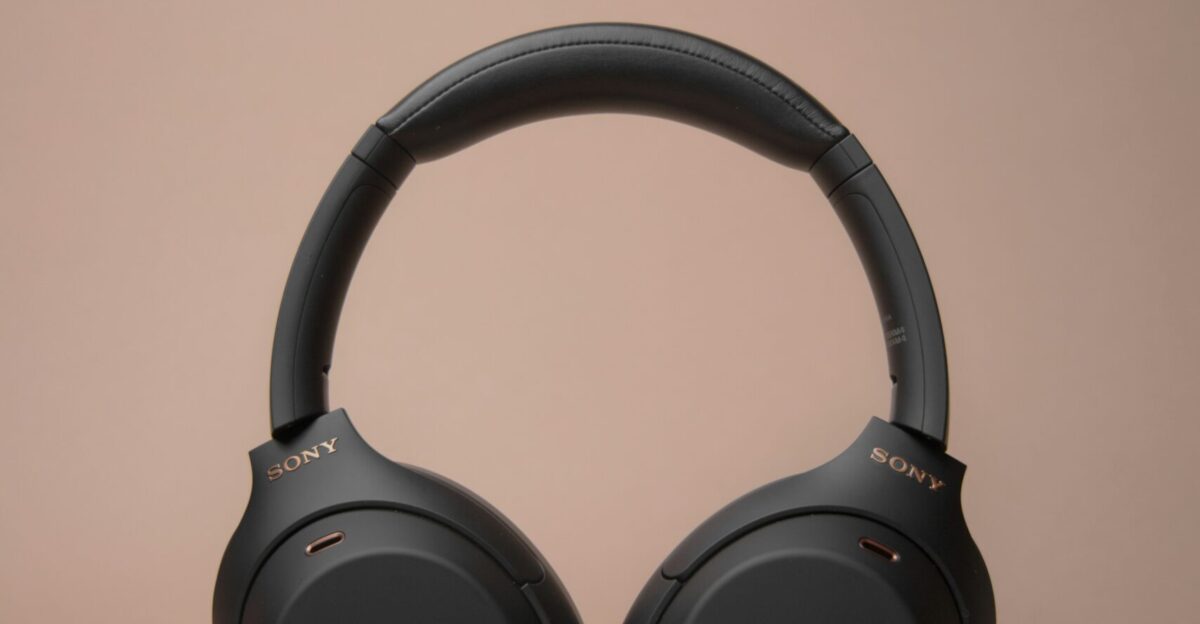
In the midst of construction on 11 Palo Alto homes, Mark Zuckerberg gave his neighbors noise-canceling headphones. This gesture exemplifies the intricate relationship between technology, empathy, community relations, and the conflicts that come with developing affluent real estate.
Over the course of 14 years, Zuckerberg has spent more than $110 million on 11 properties in the Crescent Park neighborhood, turning a peaceful residential area into a construction-heavy, high-security zone that is dominated by his holdings. The headphones are a concrete effort to lessen the annoyance that neighbors are experiencing as a result of constant noise, blocked streets, and heightened security. A sophisticated, if perhaps inadequate, strategy for handling the social repercussions of concentrated wealth in public areas is reflected in this gesture.
The Historical Background of Neighborhood Change and Wealth

From industrial-era urbanization to contemporary gentrification waves, the purchase and alteration of neighborhoods by affluent elites has frequently influenced urban and social landscapes throughout history. Long-standing social structures are commonly upended by the construction projects of wealthy newcomers, resulting in both physical and psychological displacement.
These historical trends of power exercised through spatial control are echoed by Zuckerberg’s concentration of 11 residences in a single neighborhood. However, the current situation adds contemporary complications like tech-enabled privacy walls and digital surveillance, creating new aspects of conflict that weren’t present in earlier centuries. Through a modern lens where privacy, technology, and exclusivity intensify community tensions and subvert social norms in novel ways, this situates Zuckerberg’s actions within an ongoing legacy of elite spatial dominance.
Technology that Reduces Noise as a Social Tool

When utilized as a diplomatic tool in this situation, noise-cancelling headphones, which are frequently viewed as personal tech devices for comfort and convenience, acquire a new social role. By distributing these gadgets, Zuckerberg turns a consumer invention into a tool for reducing conflict in the community. Such technology provides a psychological and sensory respite in neighborhoods overrun by disruptive construction activities.
The gesture emphasizes how technology plays a paradoxical role in Silicon Valley culture, both as a source of disruption (through building, property development, and surveillance) and as a means of reducing that same disruption. Even though the solution seems partial or symbolic, this duality highlights how tech and community tensions are intertwined and represents a novel approach to coexistence.
The Psychology of Community Friction and Noise

A well-established psychological stressor, persistent construction noise has been connected to higher cortisol levels, decreased cognitive function, and heightened emotions of helplessness and rage. Chronic exposure to construction noise is perceived by neighbors as a disruption to the normally tranquil domesticity and a real loss of control over their surroundings. Such disturbances can lead to social isolation, resentment, and the breaking of communal ties.
Although the headphones are designed to reduce noise and symptoms, they don’t completely address the wider psychological effects or underlying tensions in the community brought on by perceived power disparities and physical disruption. Thus, this method demonstrates both an awareness of sensory stressors and a possible oversimplification of more profound emotional and social rifts in the neighborhood.
Riches, Authority, and Social Duty

Giving headphones as a gift exemplifies a modern elite social responsibility practice that strikes a balance between strategic conflict resolution and philanthropic impulse. It shows that Zuckerberg and his team have acknowledged the disruptions caused by their projects and are making an effort to provide tangible compensation.
Importantly, despite its generosity, this gesture can be seen as a transactional, minimalist approach that ignores more significant structural injustices, such as the lack of housing made worse by unused luxury properties. The symbolic act sparks ethical discussions regarding the effectiveness and sincerity of elite gestures, raising concerns about whether they actually encourage community investment or if they are only token concessions meant to allay unhappiness and divert criticism.
Are the Headphones Thoughtful or Tone Deaf?

The headphone gift has been widely denounced by critics as tone deaf and a sign of the elite’s disengagement from actual community struggles. On the other hand, from a contrarian perspective, the gesture may be an inventive, tech-savvy approach to neighbor diplomacy that uses technology, Silicon Valley’s primary strength, to mitigate inevitable disruptions.
In ultra-wealthy environments, this presents the gift not just as compensation but as a component of a practical coexistence model that acknowledges that some disruption is inevitable but can be mitigated through innovative solutions. As a result, the headphones serve as a practical apology and a sign of flexible, if not perfect, harmony between mega-wealth estates and their neighbors, possibly serving as a prototype for a new kind of elite-community interaction.
Technology-Assisted Disruption Reduction

Zuckerberg’s headphone giveaway presents a convincing theory in which technology both disrupts society and serves as a cure. Using tech tools to reduce the negative externalities, such as noise pollution, privacy invasion, or environmental impact, caused by tech-driven projects is a larger emerging trend that is reflected in this feedback loop.
Using this reasoning, developers and urban planners of the future may implement integrated solutions that offer short-term respites from annoyances, such as sophisticated air filtration, vibration-dampening equipment, or augmented reality experiences. This framework provides new approaches to managing the socio-environmental effects of elite construction in densely populated areas by combining concepts from corporate social responsibility, urban planning, and technological innovation.
Real Estate and Economic Trends Affecting the Scenario

Zuckerberg’s compound is located in the Palo Alto neighborhood, which is representative of broader distortions in the housing market, including skyrocketing prices, acute shortages, and growing spatial inequality. Zuckerberg’s purchases increase social pressure and scarcity by purchasing and combining several houses, some of which are still unoccupied or converted for private purposes, like a private school.
In a region where there is a severe shortage of affordable housing, this not only artificially raises property values but also exacerbates the problem. In an economic environment characterized by macro-level inequalities, where wealthy actors’ real estate practices intensify community tensions beyond noise alone, the headphone gift can thus be seen as a localized, micro-level pacification attempt.
Social Media Backlash and Community Reactions

Online communities and neighbors have had quite different reactions to Zuckerberg’s gift of headphones. Although some value the concrete efforts to lessen the impact of noise, others see them as a tone-deaf and inadequate gesture that reflects the profound social divide between billionaires and ordinary people. These criticisms have gained more traction on social media, where some people have called the gift “sickening” and a sign of elite entitlement.
This divisive reaction emphasizes how symbolic actions can exacerbate rather than allay larger grievances and shows how brittle the social license enjoyed by the ultra-wealthy is. The limitations of material gestures in the absence of genuine engagement and community involvement are demonstrated by the online outrage pandemic.
Zoning and Legal Difficulties

Local authorities have periodically contested the zoning and legal issues surrounding Zuckerberg’s compound, which include violations for using properties for a private school and underground basements. These conflicts highlight the conflict between community regulatory frameworks and individual property goals.
Zuckerberg pursued small changes after failing to obtain approval for the construction of a large compound, deftly utilizing legal loopholes to evade significant regulatory opposition. The headphone gift places itself in this contentious context, not merely a gesture of goodwill, but also a calculated addition to the legal ambiguity and neighborhood resistance, with the goal of reducing opposition while gradually expanding the estate’s intricate footprint.
Effects of the Second Order on Social Trust

Although the headphones might momentarily lessen noise-related complaints, their transactional nature runs the risk of undermining social trust over time. Presents from extremely wealthy developers may seem like diversion from more serious issues like regulatory capture, lack of community voice, and displacement.
Instead of encouraging sincere conversation or addressing the underlying causes of conflict, neighbors may interpret such actions as attempts to buy silence. In gentrifying or elite-dominated neighborhoods, where social trust is based on open communication, shared community control, and transparency rather than just material pacification, this dynamic exemplifies the difficulty of reestablishing social capital.
The Gifting Strategy and Zuckerberg’s Psychological Repercussions

In a psychological sense, giving headphones as a gift might indicate that Zuckerberg understands his influence and wants to make amends by reducing cognitive dissonance. The tangible displays of empathy and social responsibility that the material gifts may provide could lessen guilt or social pressure brought on by unfavorable neighbor perceptions.
The superficial and specialized nature of these offerings,doughnuts, wine, and headphones, may, however, understate the more profound emotional upheavals that locals have gone through, exposing the shortcomings of transactional approaches for mending social harm and intricate community ties.
Historical Comparisons to the Elites of the Gilded Age

Zuckerberg’s action is reminiscent of Gilded Age tycoons’ historical use of material gifts and philanthropy to allay public hostility toward their opulence and troublesome estates. Similar to Carnegie’s library endowments or Rockefeller’s donation of public parks, these actions were calculated attempts to leave a positive legacy in the face of social unrest brought on by concentrated economic power.
This story is made more difficult by the technological and surveillance environment of today, where elites operate with greater security and invisibility but are also subject to new kinds of social scrutiny. This tradition of elite appeasement is reflected in Zuckerberg’s headphones, but through the lens of modern tech culture and privacy concerns.
The Media’s Influence on Storytelling

The way that the public views Zuckerberg’s gift of headphones is greatly influenced by media coverage. Long-form reports from publications like The New York Times offer complex background information in contrast to divisive remarks on social media. Simplified criticism or acclaim are moderated by news narratives that combine human stories with thoroughly researched background.
Social media platforms, meanwhile, amplify partisan and emotional reactions, influencing how the general public understands the gesture’s symbolism. This media duality demonstrates how interactions between the elite and the community are increasingly being interpreted in a variety of ways, framed by editorial agendas and platform dynamics that shape public discourse.
Urban Development Policy Implications

This case highlights pressing zoning, housing equity, and elite-driven neighborhood transformation policy gaps in urban areas. Although they alleviate symptoms, noise-cancelling headphones cannot replace thorough regulation that guarantees neighborhood integrity and community input in development.
Policymakers must develop comprehensive frameworks that incorporate open planning, legally binding restrictions on spatial monopolization, and community-driven design as wealth concentration transforms urban space. Zuckerberg’s headphones highlight the limitations of technological solutions without evolving policies to strike a balance between social cohesion and growth.
Technology, Health, and City Life

Zuckerberg’s gift of headphones is a sign of unanticipated connections between technology, urban living, and wellness. It envisions a time when personal technology acts as a mediator to offset the stresses of the urban environment, establishing technologically customizable “bubbles” of individual tranquility amid bustling cityscapes.
Collaboration on ambient health solutions, integrative products and urban designs that prioritize mental Health and sensory control via smart technologies, is encouraged by this convergence of tech innovators and urban designers. These mashups have the potential to change how people perceive urban areas and how cities integrate wellness into their development and infrastructure.
Speculative Future Situations

If developers’ gifting of headphones becomes commonplace, it may be included in broader CSR initiatives that provide a variety of remedies for development annoyances. In subsequent iterations, noise-canceling devices might be combined with personalized environment-control technologies, community engagement applications, and real-time construction updates.
These might encourage more active interactions between residents and developers. On the other hand, if genuine trust is not established, it could worsen protest, social disintegration, and neighborhood resistance, turning such gifts into meaningless tokens. This emphasizes how navigating the complexities of elite-local coexistence requires integrated relational and technological strategies.
Examples of Comparable Elite Conflict Resolution

Gift-based conflict management has been used by other wealthy people and elite developers during disruptive projects. Examples include concierge services during renovation phases and free gym memberships. However, effective communication and gestures that are relevant to local values are crucial for the success of these initiatives.
Although Zuckerberg’s headphone strategy is a contemporary, technologically advanced response that is suited to Silicon Valley culture, it also teaches broader lessons: gestures cannot replace open and honest community involvement. Analyses of historical examples show varying degrees of effectiveness and point the way toward more successful conflict mitigation during urban transformation.
Conclusion

The noise-canceling headphones that Mark Zuckerberg gave his neighbors as a gift are a multi-layered, calculated reaction that combines social gesture, technology, and elite neighborhood conflict resolution. Although the gesture is successful in temporarily reducing noise disturbances, it draws attention to more significant conflicts in modern urban America over privacy, zoning, wealth concentration, and socioeconomic divides.
In addition to highlighting the limitations of symbolic gestures divorced from more profound community integration, it acts as a prompt to consider how technology might mediate social conflict. From now on, maintaining elite-local relations in the face of swift urban change calls for more than just offerings; it also calls for sincere cooperation, openness, and creative policymaking.